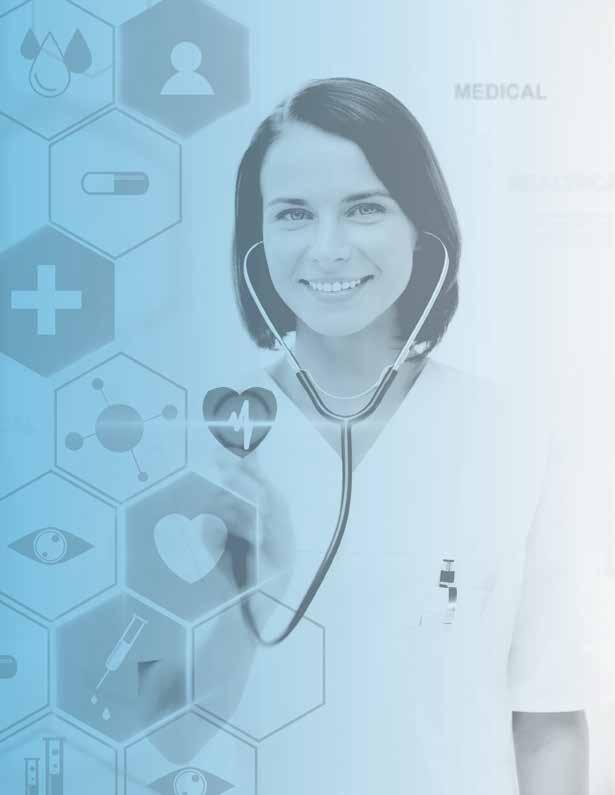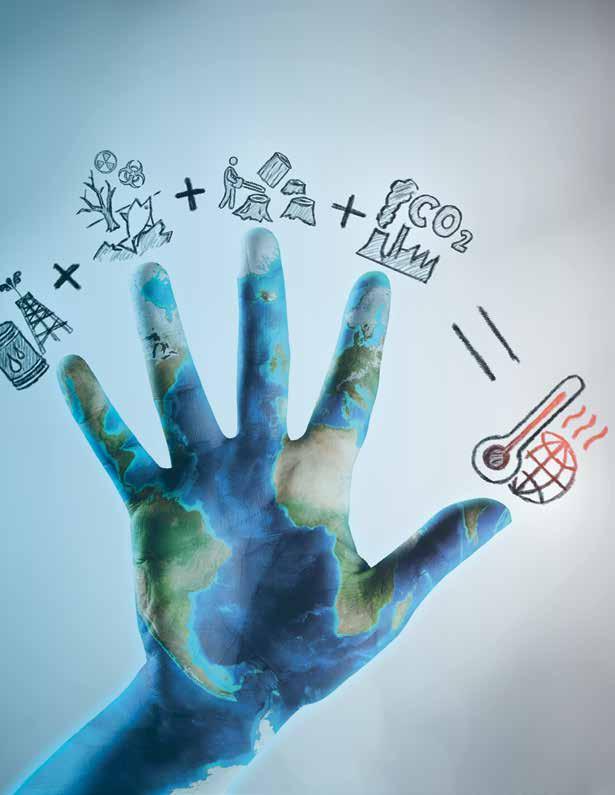
10 minute read
A Message from New SCCMA President, Dr. Cindy Russell
A Message from the President
by Cindy L. Russell, MD
Advertisement
SCCMA President
SCCMA2020Awards:IncomingPresident’sRemarks
Dr. Cindy Russell
It is truly an honor and a privilege to be elected as the President of the Santa Clara County Medical Association, of which I have been a member for over 30 years. I would like to take a moment to first acknowledge that 2020 has been a challenging time, with COVID 19, shelter-in -place orders, wildfires and a contentious election. There has been a great deal of sacrifice, suffering and uncertainty. We hope to find 2021 to be a better year.
I follow a long line of distinguished Presidents, some of whom later became president of the California Medical Association such as Dr. Robert Burnett and Dr. Jim Hinsdale (who also became AMA President). Dr. Tanya Spirtos is now Speaker of the House for the CMA. I thank them as well as all the past presidents before me for being ethical role models for all of us.
I want to thank our CEO April Becerra for her hard work and efforts in this tumultuous time, running the Association, developing programs and collaborating with the CMA to help the physicians of this County, and improve the health and well-being of the community at large. This is the mission of the SCCMA. I also want to thank all the staff of the SCCMA for their diligence and long hours of work keeping everything organized and professional.
I thank our Executive Committee and Council for their wisdom and hours sitting through many Zoom meetings that can often go into overtime. We have a strong diverse Council with different strengths, perspectives and contributions which makes for better decision making.
One person I cannot fail to mention who has made this transition easier is our past president. Dr. Seema Sidhu. She is organized, thoughtful and has an incredible memory. Her continued presence and guidance has been critical. You learn quite a bit in this job in a short amount of time and passing the gavel is a longer-term proposition than a nod and a handshake, the latter which we do not do these days. I appreciate Dr. Sidhu’s continued involvement and look forward to working with her and our president-elect Dr. Clifford Wang in the coming year.
The California Medical Association is Our Critical Ally
I wish to thank the CMA for their continued efforts on our behalf in so many areas. Next year there are several critical issues that will affect the practice of medicine, including the implementation of AB 890 Nurse Practitioner Scope of Practice, Medical reimbursement rates and MICRA. So stay tuned for updates and get involved.
Most of all I want to thank my family for their love, support and patience. Without them I could not do any of this. I am fortunate to have a wonderful husband David, who is my rock on this journey, and my daughter Kayla who is a senior in high school working on college applications now. I am proud of her resilience, wisdom and humor. My family is my relaxation and inspiration.
Some SCCMA History
The SCCMA was founded in 1876 by Dr. Benjamin Cory, San Jose’s first physician who rode on horseback to see his patients. Dr. Cory also founded the Santa Clara Valley Medical Center. Today the Santa Clara County medical Association is a 501(c)6 professional association affiliated with the California Medical Association representing over 4,500 physicians in all specialties, practice types, and stages of their careers with “the goal of improving the physician’s ability to deliver the best care possible.”
Modern Medicine
Time traveling forward we see the increasing use of technology in medicine to diagnose as well as treat patients. We now take for granted the widespread use of robotic surgery. COVID-19 has moved us solidly into virtual visits. More change is to come but in the era of the electronic medical records and online physician visits we have to be vigilant to protect meaningful patient physician interaction which it turns out is our soul food as well as theirs.
A Sense of Place
The SCCMA is very fortunate to have a home and offices on Empey Way in San Jose, with the Valley Medical Center as our neighbor. The SCCMA has hosted high school and medical student seminars, suture labs and advanced cardiac life support classes in our building. We hope to resume these as the pandemic eases.
Environmental Health
I became involved with the SCCMA as a member of the SCCMA Environmental Health Committee over 30 years ago. As a breast reconstruction surgeon, I have witnessed the epidemic of breast cancer in younger women over these decades. After learning at one of our Environmental Health Committee meetings many years ago that there are dozens of bio-accumulative toxins in the environment that are stored in fat and found in breast milk I began to connect the dots between environmental health and public health. I learned that we are exposed to 100 common chemicals daily in consumer products that are associated with breast cancer. They not only promote cancer but also contribute to neurologic decline, reproductive failure, immunologic dysfunction and can affect wildlife and the balance of nature. This prompted me to work on CMA policy recommendations along with our Environmental Health Committee to reduce pesticides, toxic antimicrobials such as triclosan, flame retardants, nanoparticles, endocrine disruptors such as Bisphenol A, fracking chemicals as well as addressing climate change. More recently I have examined the risks of wireless technology.
A Multitude of Toxins Meet Our Fragile Biology
I have learned much over the years about toxins. Most of all that the interaction of chemicals and other toxins on our fragile biology is much more complex than we imagined. With so many exposures it has become difficult to sort out the contributions of each toxin to a chronic health disease but it still remains important to reduce toxic exposures. We are exposed to multiple chemicals at once and this mixture creates toxicity in complicated ways. Age, genetics, nutrition and our immune system all play a role in the unique vulnerability of patients to these exposures.
Indirect Costs To Pollution: A Rise in Chronic Disease and Environmental Decline
The indirect costs are often hidden but the burden on healthcare is becoming more apparent. We are now experiencing a crisis of chronic disease.
Currently 42% of adults have one or more chronic diseases. Think about how many of your patients are not on medications? JAMA reports the most common chronic condition experienced by adults is multi-morbidity or the coexistence of multiple chronic diseases. This leads to more complex medical care, increased costs not to mention the suffering of patients and their families.
Children and Chronic Disease
Children are not faring any better. Fifty-four percent of children have at least one chronic health condition if you include obesity, and developmental delays. Scientific studies show the trend is worsening. Our youth used to be considered the healthiest in our population but that is changing. Generations are now at risk. We now need to examine the root causes of disease and early childhood exposures to toxins.
Root Causes of Disease: Poverty and Social Stressors
The Diversity and Inclusion series highlighted socioeconomic factors as an underlying contributor to chronic disease. Poverty and racial injustice intersect with environmental injustice and pollution, which intersects with climate change and each factor accelerating the pace of the other. Environmental racism worsens air pollution, which worsens susceptibility to respiratory viruses including COVID. More resources are used in healthcare which exacerbates climate change.
Cradle to Grave Lifecycle Analysis
Ideally we need to look at lifecycle of products and examine their environmental and health impacts– cradle to grave or we will continue to create more problems than we solve. The solutions cannot just lie with more education. A collaborative effort between communities, physicians and our government agencies is needed to create policies and actions that are precautionary and preventative.
We are seeing this already in legislation that calls for diversity on company boards as well as laws that are beginning to reduce chemicals in consumer products. This will reduce toxins we are directly in contact with but also reduce toxins in the waste stream, our water, our air and our soil and which will be served to us again in a different format and affect wildlife along the way.
Physicians in all specialties are becoming much more aware of these issues and want to focus on prevention of disease. It is cheaper and better for everyone.
War on Nature
The UN Secretary Antonio Guterres agrees, stating that humanity is “waging a War on Nature” and that by doing this we are committing collective suicide. He advised shifting our fiscal base from “taxing incomes to taxing pollution”. He stated “this is a moral test and immediate action is needed.”


Climate Change
As we know there has been rather painful but rapid shift in human activity brought on by COVID 19. One silver lining of COVID 19 has been to demonstrate how quickly reducing human activities, especially air travel and transportation in general can have a profound effect on reducing carbon emissions, air pollution, noise pollution, water pollution and unexpectedly improving bird songs. People were breathing easier and we saw blue skies that were not visible for many years.
This was short lived however as most cities have gone back to pre-COVID levels of pollution. Business as usual.
And unfortunately some agencies in the U.S. have used the COVID pandemic to relax enforcement. We simply cannot put climate change on the back burner. The house is getting hotter and the effects more apparent. Climate change is a global catastrophe far worse than the pandemic but it is a concept that is difficult for us to comprehend. Like corona-virus we do not see immediate harm when we do not wear a mask. We may not get ill for a few days or a week or not at all, and we may not see that we have indirectly harmed others.
When we consume fossil fuels we don’t see any daily change in the weather from adding that extra bit of carbon to the atmosphere that lasts 100 years. But the carbon still accumulates and then reminds us when we have a wildfire or hurricane or a drought.
Greta Thunberg tells us we have about 10 years to turn the titanic tide of greenhouse gas emissions around. Economic con-

-UN Secretary General Guterres
In closing I want let you know that in 2021 we will be developing programs focused on these issues throughout the year so look out for email updates or check the events calendar on the front of the SCCMA website to participate and be part of the solution. If you are not a member of one of our committees please consider joining us. We need you.
Heroes
It is a privilege to be a physician. Our profession comprises some of the smartest, most caring and hardest working individuals in society. That is YOU! True heroes. Thank you for everything you do every day to both take care of your families and your patients, especially in these times. Don’t forget to take care of yourselves and practice self-compassion and kindness.
Planet of the Year
We are all in this together and will help each other through this, advocating for our patients, our practices, the health of all Americans, not to mention the health of our beautiful, swirling, one and only Planet of the Year. We have the power to change the course of our planet’s future. Let’s continue to think globally but act locally.
As President John F Kennedy said,
version to jobs that restore and preserve the environment is an idea that is gaining more traction. If former San Jose State Professor of Environmental Studies, Frank Schiavo were with us, he would tell us that we need to have an economic shift from our 70% consumer oriented society to a 70% agricultural society and use regenerative farming techniques to build soil that sequesters carbon. We may not get to 70% but there is a lot we can do that will make a positive difference to create a stable climate, assure food security and preserve human rights for the next generation.
Incentivizing a Sustainable Economy Will Work
All these things can be done if we have fairness, transparency, accountability, public input and center reality into the process of decision making. Corporations have benefited us a great deal but when their profit supersedes our health it has to be called out and checked. Economic improvement cannot be an excuse to ignore environmental health, human rights or the health of future generations. We are now realizing that the environment has to take top priority.






